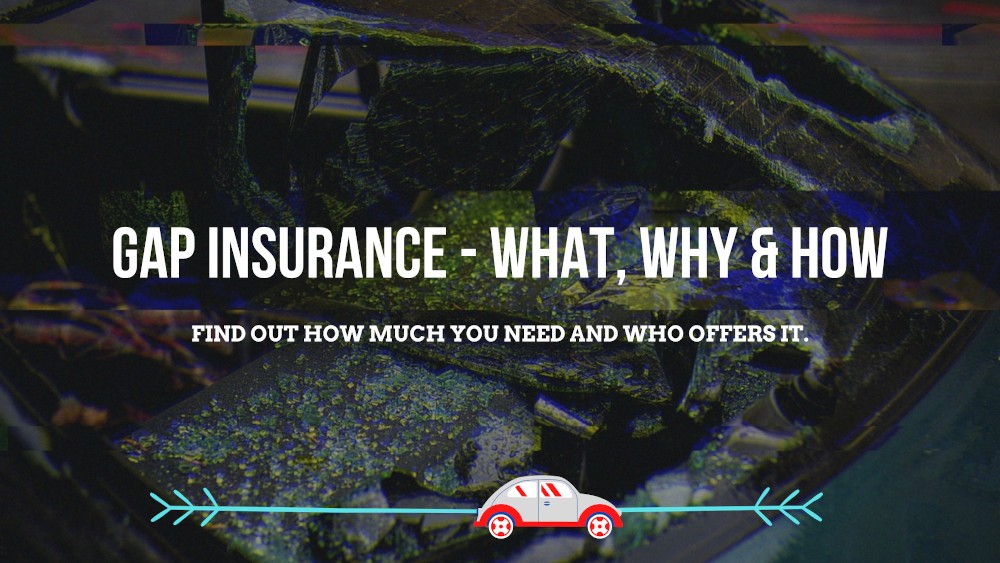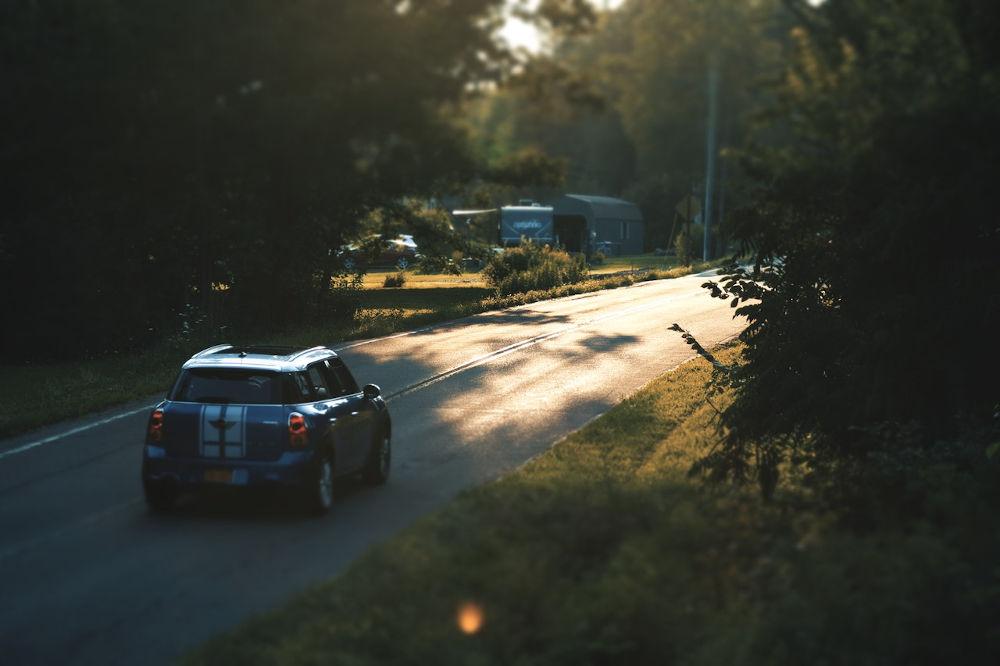
When you take out auto insurance, you operate under the assumption that the insurer will provide you with enough money to buy a replacement car if you write yours off in a crash.
It's part of the deal, right?
You pay them a monthly premium, and then, in return, you get a lump sum for a new vehicle if yours is beyond economical repair.
Unfortunately, that’s not quite how it works out in practice. Usually, insurers will only give you the "cash value" of your vehicle - the amount you could sell it for undamaged today - not what you paid when you bought it.
Remember, the moment you drive your car off the forecourt, it starts to lose value. Some vehicles can depreciate by more than 30 percent in the first year alone. For this reason, standard cover often leaves you feeling short-changed. There’s always a big difference between the money they give you and the original value of your vehicle.
This issue becomes problematic for those who borrow to buy their cars or take them out on lease. The insurer's payments may not cover the remainder of the term specified in the agreement, leaving you with monthly bills for a car that no longer exists.
Fortunately, there is a type of insurance you can get where you do receive something approaching the cash value of the car when you bought it, allowing you to cover any depreciation or outstanding loans on the totaled or stolen vehicle.
What is gap insurance?
Paying you the present cash value of your vehicle makes sense from the perspective of the insurer. It is not their job to cover your depreciation costs. Instead, their role is to maintain your assets' value like-for-like so that you're no worse off than before.
As the customer, though, you might not like this arrangement. You might prefer it if the insurer paid you the original MSRP of the vehicle, allowing you to pay off any outstanding debts or lease installments.
That’s where gap insurance can help. This type of insurance pays the difference between your car's cash value when it is stolen or totaled and the balance on the loan or the lease.
Most people assume that the "gap" refers to the difference between your vehicle's new and depreciated value. But it stands for "guaranteed asset protection," referring to the fact that it lets you avoid losing equity.
How does gap insurance work?
The discussion has been a little abstract so far, so let’s bring it down to Earth with an example.
Let's say that you get involved in an accident, and you total your car, meaning that it is beyond economical repair.
In this situation, your collision and comprehensive insurance would pay you the cash value of the vehicle had you sold it undamaged on the day of the crash, say $10,000. However, suppose that you still have $20,000 outstanding on your loan.
If you don't have gap insurance, you have to pay the remaining $10,000 out of pocket. By contrast, if you do have this type of cover, then your insurance company will pay the remaining $10,000 for you.
Gap insurance also helps to protect your assets in other ways. For instance, you would usually have to pay a deductible to get access to a cash payout via your traditional collision or comprehensive coverage policy. Gap insurance protects you from these additional payments, meaning you don’t have to provide the insurance company with an upfront fee.
Therefore, Gap insurance is a product for anyone looking to preserve their wealth in the aftermath of an accident. You avoid paying dead money to a loan company or leasing agency, and you don’t have to fork out a hefty deductible to benefit from your existing policy.
Should you buy gap insurance?
Economists' favorite saying is that there's no such thing as a free lunch. And that’s as true for gap insurance as it is for anything else. You get more cover, but you also pay additional premiums for the privilege.
Two groups of drivers stand to benefit the most from gap insurance:
- Those with cars that are more than two or three years old
- Those who are the original owner of the vehicle
It makes sense to take out gap insurance when you have a new car because the difference between the outstanding lease and the car's cash value is likely high. Often, cars depreciate faster than you pay off the loan, meaning that you get into negative equity territory if you write them off.
Eventually, though, the amount you owe and the cash value of the car will equalize. And, ultimately, you won't owe anything and be left with nothing but the value of the asset. In this case, it doesn't make much sense to continue paying gap insurance, and most insurers will cancel it on your behalf automatically. (Some, however, will still require you to call them up).
How much does gap insurance cost?
While gap insurance offers a host of benefits and adds to your monthly premium price, it shocks most drivers to discover how little it typically costs. Expect to pay in the region of $20 to $40 per year on top of your existing premium - around $1.50 to $4 per month.
If you attach gap insurance to a loan or a lease, some lenders will insist on a one-off flat fee of between $500 and $700, which can seem a little steep by comparison. However, if you compare many vendors online, you can sometimes get this as low as $300.
Please note that the actual amount you pay will depend on all the usual factors that go into your insurance premium consideration, including the car you have, your age and gender, and the area you live in. All these background characteristics determine your level of risk to the insurer.
Situations when gap insurance is worth it

You should consider taking out gap insurance if:
- You lease your car
- You have bought a car that depreciates faster than the average
- You drive a lot (which causes the car to lose value faster)
- You have a fixed loan or lease agreement that lasts more than four years
- You have made a small down payment on your vehicle, and the rest is on loan
Are there alternatives to gap insurance?
It turns out that gap insurance isn't the only way to protect the value of your net asset position if somebody steals your car or you write it off in an accident. Other products are available too.
New car replacement
If you're more concerned about replacing your old vehicle with a new one than paying off the existing lease or loan, "new car replacement" might be the better choice for you.
This type of cover provides you with the money you need to replace your existing vehicle with the same make and model, brand new. Sometimes, you'll be able to get a replica of your totaled car. Other times, you'll receive an updated version, depending on the manufacturer's product cycle.
Most companies that sell new car replacement policies - such as Travelers, Safeco, Farmers, and Allstate - will still demand that you pay a deductible to access benefits to cover your losses. And usually, they will only offer this sort of cover on new vehicles, not those that are more than three or four years old.
Interestingly, most insurers do not offer you a choice between new car insurance and gap insurance. They only provide one or the other (although there are exceptions).
Better car replacement
Sometimes, you'll come across so-called "better car replacement" policy options. Often, there will be no direct replacement options if you have an older vehicle, usually because the manufacturer doesn’t sell it anymore.
Better car replacement gives you money to buy an equivalent vehicle to the one you currently have, as new. It will likely be an alternative to your existing model, but it will be more recent or brand new.
Companies offering this type of policy include Erie, Acuity, Chubb, and Liberty Mutual.
Loan/lease payoff
The difference between gap and loan/lease payoff insurance is minimal, and the definitions tend to vary from provider to provider. Some insurers use the two terms interchangeably, adding to the confusion.
Strictly speaking, gap insurance is only available if you have a new car. Loan/lease insurance, however, is for buyers of second-hand vehicles financing them on credit.
Usually, loan/lease policies specify a percent of your vehicle's value that'll top-up in the event of an accident. Most insurers target around 25 percent, covering the bulk of your car's depreciation in any given year.
As always, you'll need to check the small print to find out what exactly each company covers in its loan/lease payoff policies. Some will offer more coverage than others. Current providers of this type of insurance include Progressive, Farmers, and Esurance.
Who provides gap insurance?
As mentioned previously, there are a couple of options for purchasing gap insurance.
You can either go directly to your insurer and pay an additional fee on top of your existing premiums. Alternatively, you can approach a company that sells it for a one-time fee.
Some dealerships work with insurers and creditors to roll gap insurance into your monthly lease or loan payments. Here, you pay the cost of the gap insurance, plus interest, over the loan's life.
Companies that offer gap insurance as part of a regular monthly policy include:
- Progressive
- Safeco
- State Farm
- Travelers
- USAA
- Central Mutual
- Chubb
- CSAA Insurance Group
- Esurance
- MetLife
- Mapfre
- Nationwide
- Plymouth Rock
- AIG
- AAA
- Allstate
- Ameriprise
- American Family
(Please note that in some cases, the insurer may only sell loan/lease coverage).
If you want to buy stand-alone gap insurance, you can buy it online separately through providers such as Gap Directly, or get it directly from lenders as part of the loan agreement, such as State Farm or Progressive.
A third option is to get gap coverage when you take out a loan or lease through your dealership. The dealership will simply add the flat fee for the extra cover to your total amount borrowed and then roll it up with your regular monthly payments. As such, you'll pay interest both on the value of the vehicle and the money you borrow for the insurance,
Some experts recommend that you avoid this by going directly to your insurance provider instead. Shopping around often allows you to avoid additional fees and keep your monthly expenses to a minimum,
Please note, however, that some lenders may require you to take out gap insurance in their terms and conditions, in addition to the usual collision and comprehensive cover. It is not a legal requirement that you do so, so you are free to go to another lender who is prepared to grant you credit without taking out gap cover insurance.
Dealers will also bundle gap insurance with lease agreements. Often, you need to dig a little to find these terms as the dealer may not be aware of them or neglect to tell you.
Sometimes, dealers will insist on gap cover, but not always. Many will allow you to request to remove it, bringing down your monthly premiums. Remember, you don't have to buy gap insurance from the dealer if you don’t want to. Plenty of third-party options are available.
How to tell if you already have gap insurance
There are a couple of places you can see whether you already have gap insurance on your vehicle.
First, check your existing car insurance policy. It'll either list "gap insurance" or "residual payment insurance" on your policy document (or related insurance, such as lease/loan payoff).
Second, check the terms of your existing lease or loan. Sometimes, you're already paying for it and don't need to take out a second policy. You don't want to pay for the same level of cover twice.
